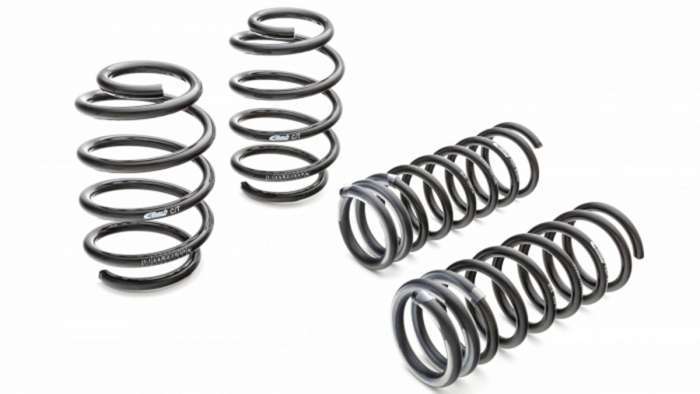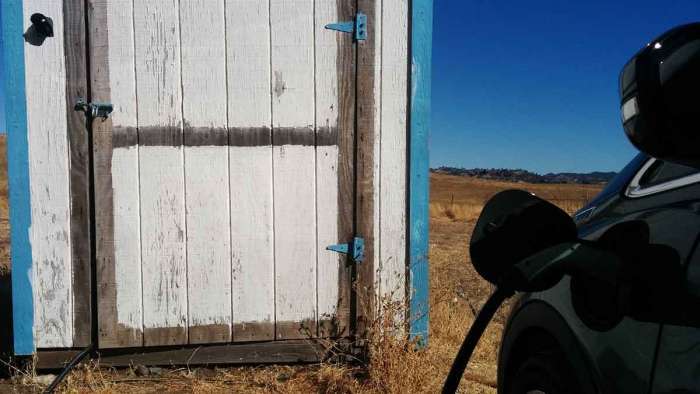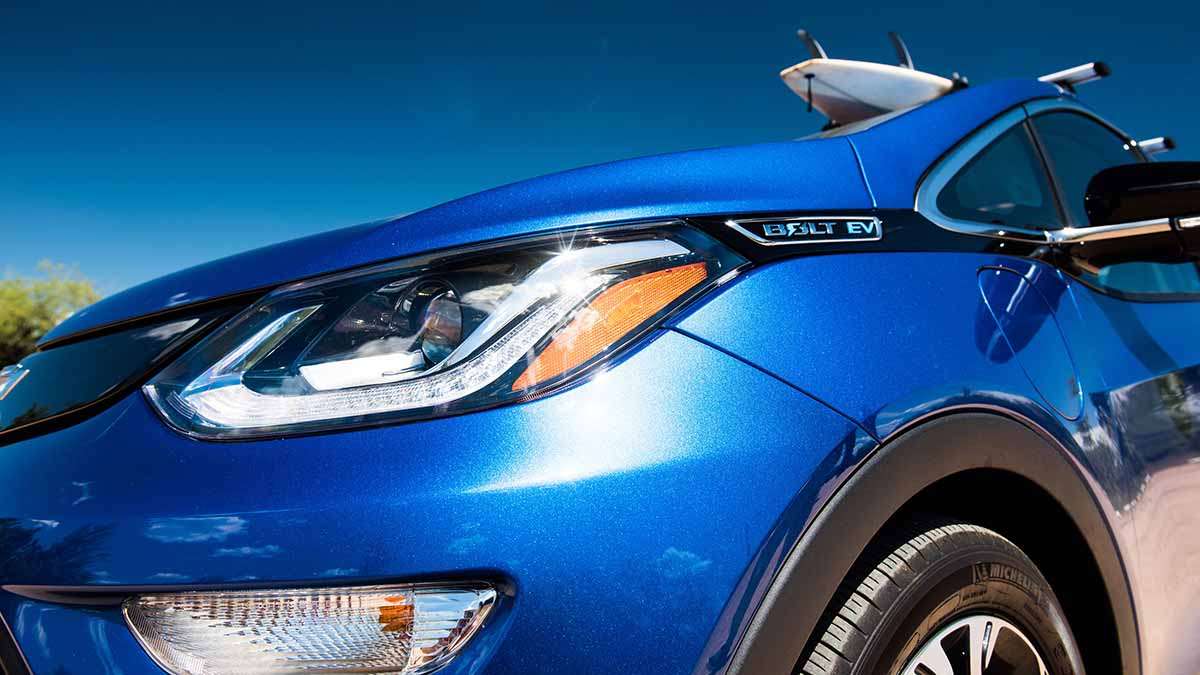Since the Chevrolet Bolt EV was first released, some Bolt EV owners have actively modifying and upgrading the car to meet their needs and preferences. These can range from simple modifications such as dash covers and seat pads to slightly more involved modifications such as wheels and tires or upgraded sway bars.
One common modification route that has been missing, however, is lowering springs. Luckily, Eibach has recently released an approved front and rear lowering spring set for the Chevy Bolt EV. These are the PRO-KIT Performance Springs, and Gonzalez Automotive Repair shared a video of the installation process.
Even if you aren’t interested in installing a lowering kit, I recommend watching the video as it provides an interesting view of working on the Bolt EV’s suspension system.
In this story, I will discuss some of the benefits and drawbacks of lowering springs and why you might want to install a set on your Chevy Bolt EV.
Eibach PRO-KIT Performance Springs
The Eibach PRO-KIT springs will lower the front of the Chevy Bolt EV by 0.9 inches and the rear by a full 1 inch. These are “progressive” springs, so as the springs compress, they get progressively stiffer. As they decompress, though, the ride gets progressively softer. In theory, this provides both a soft handling ride during normal driving but also a stiffer ride when driving aggressively.

In Eibach’s product description, they claim that these PRO-KIT Performance Springs will improve handling, provide more aggressive looks, lower the center of gravity, and enable the car to stop quicker, and even improve efficiency. I will discuss each of these claims in more detail.
Improve the Chevy Bolt EV’s Handling
One common claim about lowering springs is that they improve handling. While that can be true, it is not always the case. The lowering springs have less travel, so the car will pitch and yaw less around corners and slaloms. However, suspensions are complex systems that require a lot of fine tuning, so even doing something that is beneficial can throw off other aspects of the suspension.
This misalignment of other parts in the suspension system can actually reduce the contact patch of your tire, both increasing tire wear and actually making the car’s handling worse. Of course, it can also cause those other suspension parts to wear out faster, at which point they might not be eligible for repair under warranty.
Essentially, if you’re going in with the intent to make your Bolt EV handle better, expect to tune the entire suspension system in addition to adding these lowering springs.
Make the Bolt EV Look More Aggressive
Many car owners prefer to have a very small gap between the tire and the wheel well because they feel it gives the car a more aggressive, sporty look. Lowering springs are, by far, the most effective way of doing this.
You can see an example of what the Chevy Bolt EV would look like with these lowering springs in the Gonzalez Automotive Repair video , but you can also go out and measure your own car. Simply measure from the top of the tire tread to the bottom of fender, and subtract an inch in the front and inch in the rear.
If that’s a look you’re going for with your Bolt EV, these Eibach springs would be a good choice.
Lowering the Chevy Bolt EV’s Center of Gravity
The Chevy Bolt EV already has an extremely low center of gravity thanks to a large portion of its weight being housed in the battery at the base of the car. According to Chevrolet, the Bolt EV’s stock center of gravity is 20.7 inches. To put that into perspective, the Bolt EV’s stock center of gravity is only an inch higher than the Ford Mustang Shelby GT350 or Toyota Supra (two true performance cars).
By lowering the Bolt EV’s ride height one inch, the center of gravity will drop even more, giving the Bolt EV the same center of gravity as performance cars despite being a high-roofed hatchback. This lower center of gravity is one of the main reasons for the improved handling, and it is what enables the car to corner better.
Stop the Chevy Bolt EV Quicker
Eibach also claims that these springs will enable the car to stop more quickly. The main reason for this is that lowering springs reduce the amount of forward and rearward travel, so when braking, the weight is more evenly distributed across all the tires.
This can also have an effect on acceleration, as the front tires are less prone to lifting off and losing traction while accelerating. Any effects on acceleration are likely to be small, however, and it would require back-to-back testing to see if there was any measurable improvement.
What is still unknown for a vehicle like the Bolt EV is how this will affect regenerative braking. One of the reasons the Chevy Bolt EV’s regenerative braking is so effective is that more of the vehicle’s weight transfers to the front when braking, feeding even more energy through the regenerative braking system.
Improve the Chevy Bolt EV’s Efficiency
One area where lowering springs are most interesting for Chevy Bolt EV owners (and electric vehicle owners in general) is how they impact efficiency. The biggest energy draw for any vehicle is overcoming aerodynamic drag, which is a function of both the vehicle’s shape (coefficient of drag, or Cd) and the vehicle’s frontal area. Together, they are referred to as the car’s CdA.
Lowering springs will not change the Chevy Bolt EV’s Cd; however, it will reduce the frontal area by lowering the car’s overall profile. Essentially, in stock trim, the Chevy Bolt EV’s frontal area is 30.3 sq/ft, and the frontal area after lowering the car by an inch would 29.8 sq/ft. That’s about a 2% improvement.
While 2% might not sound like much, overcoming aerodynamic drag typically comprises about 70% to 80% of an electric vehicle’s total energy consumption, so the energy savings could be significant.
Final Thoughts and Concerns
If you’re in the market for lowering springs for your Chevy Bolt EV, they are now available, and they do have plenty of positive benefits. Just be sure to understand that they can have drawbacks ranging from worse ride quality, worn parts and tires, and less overall ground clearance.
One of my biggest concerns (and the main reason I might not get a set for my own Bolt EV) is the ground clearance I require for traveling over dirt roads with a lot of debris. If my car was only used in the city and on highways, however, I would have far less hesitation.

Also, because these lowering springs could affect other parts, be sure to have them installed by a qualified mechanic. I would suggest reaching out to your local Chevy dealership to see if their service center is willing to install these lowering springs. It still might not preserve the warranty, but at least you have certified GM mechanics working on your vehicle.
See you next time as I discuss some of the best wheel options for the Chevrolet Bolt EV!
About The Author
Eric Way focuses on reporting expert opinion on GM brand electric vehicles at Torque News. Eric is also an instructional designer and technical writer with more than 15 years of writing experience. He also hosts the News Coulomb video blog, which focuses on electric vehicles, charging infrastructure, and renewable energy. Eric is an active member of the EV Advocates of Ventura County, a volunteer organization focused on increasing the widespread adoption of electric vehicles. You can follow Eric on News Coulomb Youtube, on Facebook at @NewsCoulomb as well as on Twitter at @eway1978.






Comments
I think that most people who
Permalink
I think that most people who lower their car are looking for better handling and a more sporty, customized look for the car. I've lowered several of my cars. Mostly with lowered springs, but also with torsion bar adjusters welded in on my VW, and also with shortened coil over caps (which retain the stock shocks). For swapping the springs I prefer progressive rate springs because the lowered ride isn't bone-jarring in normal driving and it mostly feels like stock, but the suspension does feel stiffer in the corners. I will echo Eric's comments about taking the car to a trained mechanic with experience in replacing springs. Anyone can rent a spring compressor, but there is a serious amount of energy in a compressed spring, and you could get badly hurt trying to do it yourself if something goes wrong. I also will say that you absolutely need to get the car realigned after swapping out the springs. I bought a car that had been lowered by the previous owner and the inside tread on all of the tires were gone. Plus on that car (a Mercedes C230) the car scraped the tires on the plastic fender liner when you hit a mild bump, which was annoying. I eventually went back to stock springs and I wished that I had done it earlier. But on the otherhand I put Eibach progressive lowered springs on my Fox Body Mustang and everything felt better afterwards. The ride comfort did not suffer and it felt more buttoned down, especially in the corners. If you are interested in a particular performance modification I would suggest to go online to an automobile forum where there are others who have already installed those aftermarket items. You will often get good hints on getting the best price, and install tips, and usually you can find unfiltered reviews on the good and bad impressions of owners who have lived with the exact modifications done to their own car. Also local car clubs are a good place to see and maybe even get a ride in a modified version of your car. Many automakers build their cars with extra suspension travel and ground clearance to allow for owners with rutted and pothole ridden roads. But if most of your driving is on normal paved roads then having the car 1" lower can feel like a nice improvement over stock. The success of modifying your car depends on your expectations, and how well the modification actually works in your car.
Evidently, whoever is doing
Permalink
Evidently, whoever is doing this doesn't have to navigate snow. A Bolt is not a very good plow.